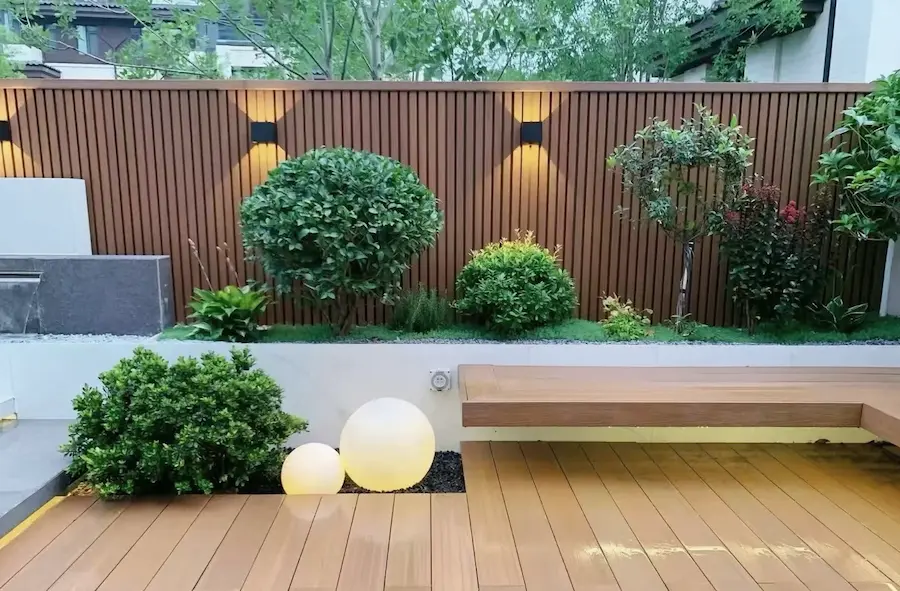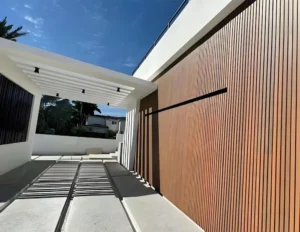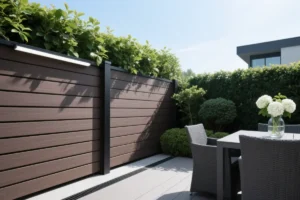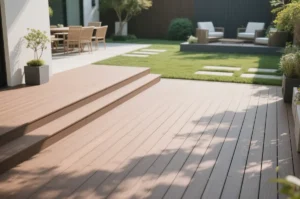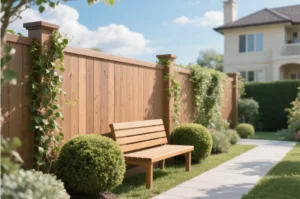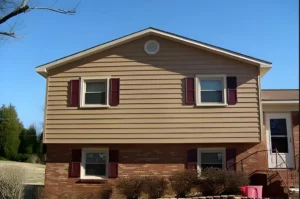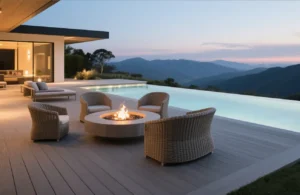WPC (Wood Plastic Composite) is revolutionizing the way we build outdoor and indoor spaces. As a modern alternative to natural wood, WPC combines aesthetics with performance, offering a durable, eco-friendly, and low-maintenance solution for residential and commercial use.
In this article, we’ll explore:
- What WPC is
- Key features of WPC
- Common WPC products and their application scenarios
Let’s dive in.
What is WPC?
WPC stands for Wood Plastic Composite. It is a hybrid material made from wood fibers and thermoplastics, usually recycled HDPE (high-density polyethylene), PP (polypropylene), or PVC (polyvinyl chloride).
The combination creates a strong, long-lasting, and sustainable material that mimics the appearance of wood but avoids many of its downsides.
WPC is produced through extrusion or compression molding. Pigments, stabilizers, and other additives are also included to enhance color, UV resistance, and strength.
Key Features of WPC
WPC is gaining popularity worldwide for a reason. Here are some of its top characteristics:
1. Waterproof and Moisture Resistant
Unlike natural wood, WPC doesn’t absorb water. This makes it ideal for wet or humid environments like gardens, pool decks, and bathrooms.
2. Durable and Long-Lasting
Thanks to its plastic components, WPC doesn’t warp, crack, or rot. It withstands extreme temperatures, UV exposure, and termites.
3. Low Maintenance
Forget sanding, staining, or sealing. WPC surfaces are easy to clean with just soap and water.
4. Eco-Friendly
WPC uses recycled materials and helps reduce deforestation. Many manufacturers promote it as a green building material.
5. Safe and Splinter-Free
WPC is smooth to the touch and doesn’t splinter, making it safe for homes with children or pets.
6. Fire and Slip Resistant
Many WPC products are engineered to meet safety standards, including B1 fire retardant rating and anti-slip textures.
Common WPC Products & Their Applications
WPC is incredibly versatile. Let’s look at the most popular WPC products and where they’re commonly used.
1. WPC Decking
WPC decking boards are one of the most popular uses of this material. They are used in:
- Backyard patios
- Garden paths
- Rooftop terraces
- Swimming pool surrounds
Compared to timber, WPC decking stays cooler in the sun, resists fading, and doesn’t require regular upkeep. Want to know more about WPC decking, you can read this ultimate-guide-to-wpc-decking.
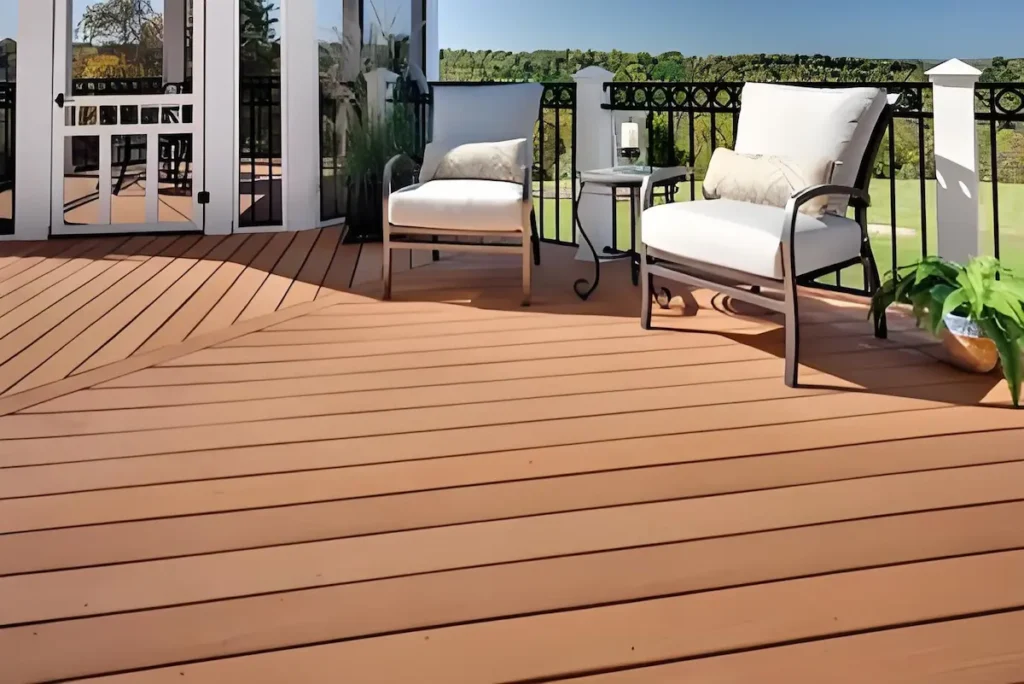
2. WPC Wall Panels
WPC wall panels are suitable for both interior and exterior decoration. They’re used in:
- Residential feature walls
- Hotel lobbies
- Commercial facades
- Bathroom walls
They provide thermal insulation, soundproofing, and a sleek, modern look.
3. WPC Fence Panels
WPC fencing offers a stylish, long-lasting alternative to traditional wooden or metal fences. Ideal applications include:
- Garden boundaries
- Privacy screens for patios
- Gated communities
- Industrial perimeters
WPC fence panels resist harsh weather and don’t need repainting, making them perfect for year-round outdoor use. Wondering how WPC fences compare to other materials? Check out our detailed guide on WPC fences vs PVC fences to learn the pros and cons of each option.
4. WPC Pergolas and Gazebos
WPC is also used to construct beautiful pergolas or gazebos for outdoor living areas. These structures withstand rain, sun, and wind while maintaining a natural wood appearance.
Applications:
- Garden lounges
- Resort walkways
- Restaurant courtyards
5. WPC Ceiling Panels
WPC ceiling panels are common in modern interior design. They’re used in:
- Bedrooms and living rooms
- Conference rooms
- Cafés and shopping malls
The material offers a clean, seamless finish and contributes to better acoustics.
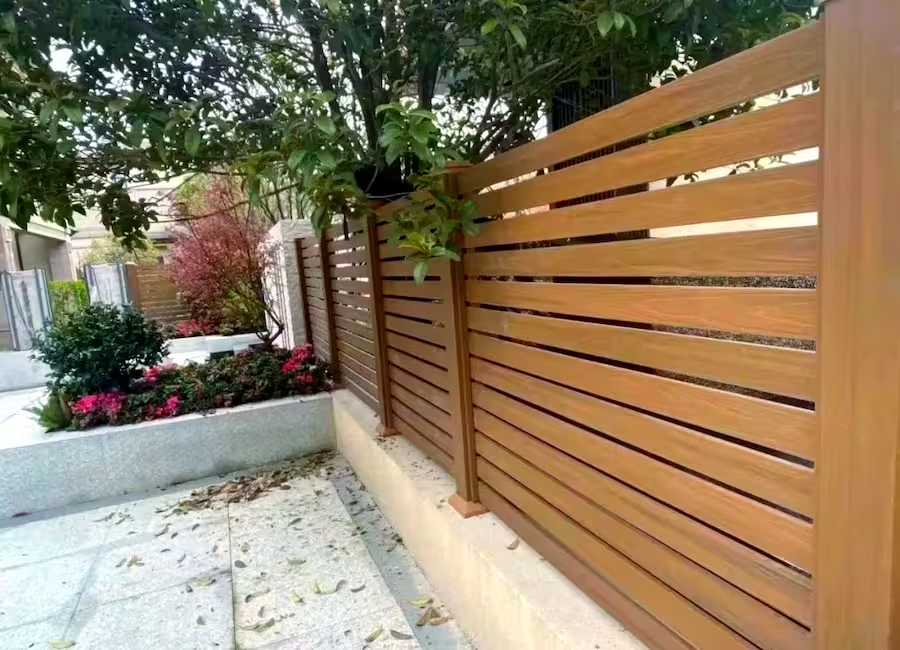
Why Choose WPC Over Traditional Materials?
Traditional wood requires ongoing maintenance. It can rot, splinter, attract pests, and deteriorate with time. On the other hand, plastic alone can look cheap and feel artificial.
WPC offers the best of both worlds:
- The look and feel of wood
- The durability and convenience of plastic
Whether you’re a homeowner, architect, or builder, WPC is a smart, sustainable choice.
Conclusion: WPC is the Future of Building Materials
With its impressive blend of form and function, WPC continues to reshape the construction and decoration industry. From outdoor decking to decorative wall cladding, WPC provides long-term value, style, and environmental benefits.
If you’re looking to upgrade your space with modern, eco-friendly materials, consider adding WPC products to your next project.

